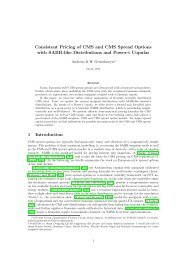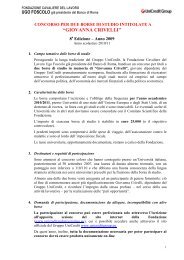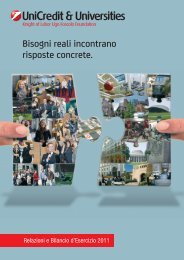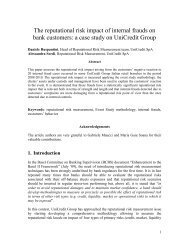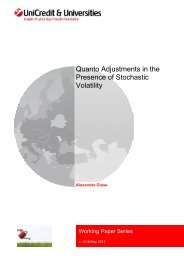Dóra Fazekas Carbon Market Implications for new EU - UniCredit ...
Dóra Fazekas Carbon Market Implications for new EU - UniCredit ...
Dóra Fazekas Carbon Market Implications for new EU - UniCredit ...
Create successful ePaper yourself
Turn your PDF publications into a flip-book with our unique Google optimized e-Paper software.
Based on these numbers, it may be concluded that – although in lieu of other relevant market data,<br />
researchers could only rely on the data of the central registry (Kerr, 2007; Trotignon and Ellerman,<br />
2008) – this is not a reliable method <strong>for</strong> determining the true number of transactions and allowance<br />
flows.<br />
Figure 46. Emissions allowance flows<br />
Source: author’s calculation based on Hungarian Registry and CITL data<br />
According to the Registry, Hungary saw the inflow of the most <strong>for</strong>eign emissions allowances<br />
(41.37%) during the first year of the pilot phase; CITL did not record the surrendering of any<br />
<strong>for</strong>eign allowances in Hungary during the first year. According to the Registry, approximately one-<br />
third of <strong>for</strong>eign allowances (36%) entered Hungary during 2006; about one-fourth entered the<br />
country during the last year (22.6%). Based on CITL figures, the second year was essentially<br />
negligible (4.11%), while the third year saw the influx of the majority of <strong>for</strong>eign allowances<br />
(95.89%).<br />
In the author’s opinion, the differences in the transactions and uses of allowances may be explained<br />
by the tendency <strong>for</strong> operators to use their grandfathered allowances first, be<strong>for</strong>e going on to<br />
surrender <strong>for</strong>eign allowances. Trotignon and Ellerman (2008) also point out that installations tend<br />
to use their own allowances first, be<strong>for</strong>e utilizing other allowances (p. 5). The two authors cite the<br />
borrowing practices of individual installations as proof. They identified 69 installations (p. 21),<br />
which only surrendered their own allowances during the first two years, but surrendered only<br />
<strong>for</strong>eign allowances during the final year. The author has examined, <strong>for</strong> this dissertation, Hungarian<br />
companies, which had surrendered <strong>for</strong>eign allowances, and found that the conclusions drawn by<br />
Trotignon and Ellerman are in fact correct. Three-fourths of Hungarian companies used Hungarian-<br />
171



